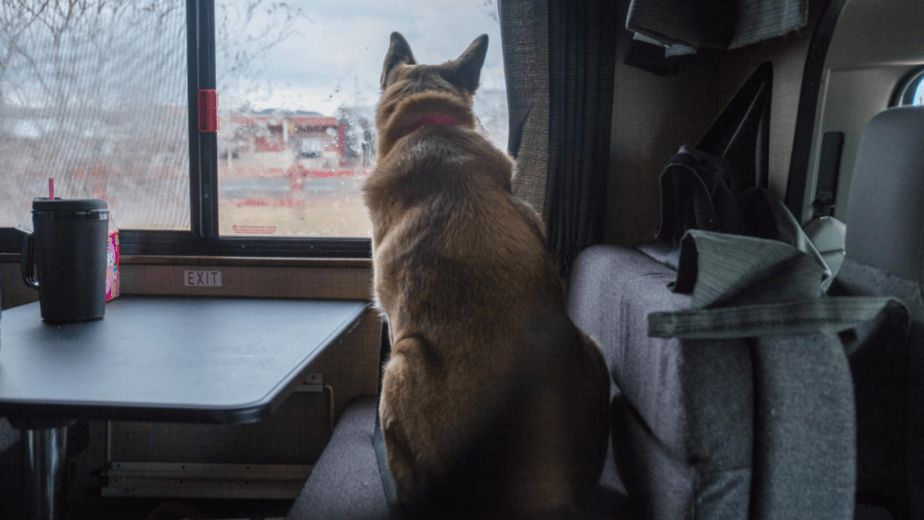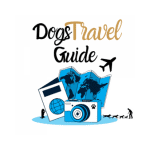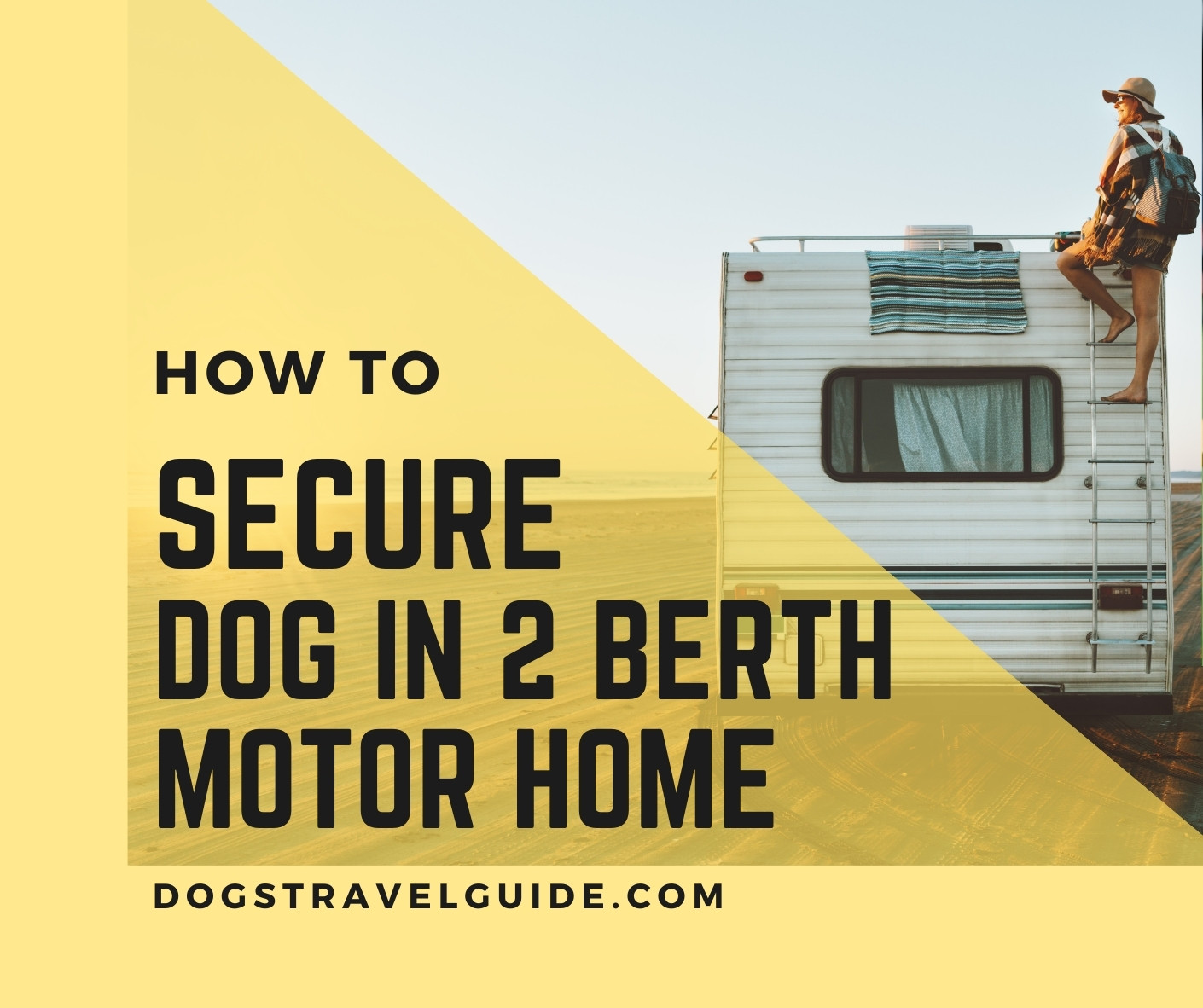When going on long road trips in a motorhome you want to make sure that your dog is as safe as possible in case of any sudden braking or maneuvering.
Most dogs will happily sit on their bed in the back, however, this is very unsafe and not advisable.
Now there are many ways to secure a dog in a 2 berth motorhome, the most common way is to use a dog seat.
“But” as you know the 2 berth motorhome is slightly smaller than the average motorhome so this really depends on the size of your dog and the space you have access to.
That being said, there are still plenty of ways you can secure your dog in a berth motorhome, which you can read below, “but” again this really depends on you the space you have.
Ways To Secure A Dog In 2 Berth Motorhome
Seat Belts
The most important feature in your motorhome when securing your dog is seat belts.
The great thing about seat belts is they can secure your dog in a variety of ways.
For example, Did you know you can use seat belts to secure your dog using a harness, crate, dog carrier, or dog booster seat? Which are all designed for the use of seatbelts.
Dog Carrier
If you travel a lot with your dog then you should know the importance of using a portable dog carrier.
It’s a great way the secure your dog in a 2 berth motorhome.
What’s best about dog carriers is there are lightweight and very easy to move around, not only that but they can keep your dog from jumping over the furniture in your motorhome.
Dog Cage
Using a dog crate is another good way to secure your dog, however, they do use up a lot of space and can only be placed on the floor of the motorhome.
That being said, like a carrier they keep your dog from jumping over the furniture and they provide a safe space if you have any anxious pups.

Dog Harness
If you are someone who takes your dog on long walks regularly then you most likely already have a Dog Harness.
Not only do they stop your dog from choking but also secures them in a car or motorhome.
Most dog harnesses are designed with a handle on the back to loop through a seat belt to secure your dog in a car or motorhome.
Related Article
Dog Booster Seat
A dog booster seat is another great way to secure your dog in a motorhome. They are very comfortable for your dog and most are designed with your dog’s safety in mind.
Booster seats also provide an elevated seating position that allows your dog to enjoy the view while in transit and has a harness buckle to stop your dog from jumping out of the seat.
Related Article
Best Place To Secure A Dog In A 2 Berth Motorhome
The best place to secure your dog would be on the seat preferably in a dog booster seat,
however, this all depends on the size of your dog. If you have a large dog then the floor would be the recommended spot.
If you do have a large dog you should place them in a dog crate or cage and make sure it’s fully secure in case of any breaking or maneuvering.
Because a 2 Berth Motorhome is quite small and sometimes it can be a bumpy ride,
it’s a good idea to have your dog wear a harness during the trip.
A dog harness is well padded and will protect your dog from any bumps while traveling on the road.
Law On Dogs In Motorhome
Always check to make sure you’re up to date and follow the laws when traveling with your dog.
Now depending on which country you reside in the law can be different in each country.
If you reside in the UK for example, It’s a law that you need to be suitably restrained and cannot be a distraction to the driver when traveling in a car or motorhome.
The Highway Code Rule 57
When in a vehicle make sure dogs or other animals are suitably restrained so they cannot distract you while you are driving or injure you, or themselves if you stop quickly. A seat belt harness, pet carrier, dog cage, or dog guard are ways of restraining animals in cars.
www.gov.uk

Can You Leave A Dog In A 2 Berth Motorhome?
You should never leave your dog alone in a car, especially on a hot day and the same goes for a 2 berth motorhome.
Even if you leave the ac on there’s still that chance something could go wrong.
In most cases people tend to travel in a motorhome on a hot day, however, if the conditions are cold outside, it’s still not very wise to leave your dog alone.
“But” if you find that you have no choice there are Remote Sensors that lets you monitor the temperature inside your motorhome.
You can either use Bluetooth or WiFi with these sensors paired to your phone, you then get a notification if there’s a change in the temperature.
Remember the basics
Make sure water is consistently accessible for your dog (this is simple in a motorhome because it has running water)
However, it is always recommended to take extra bottles of water with you.
A dog can become thirsty on a road trip so remember to give breaks so the dog can relieve itself.
Check List
- Your Dog’s favourite toys
- Dog food bowl
- Dog litter bags
- Travel water bowl
- Shampoo to wash your dog
- Your typical food and treats
- Collapsible silicone bucket to wash the legs
- Towels to dry the dog (microfiber ones dry quickly)
Related Article
Protect Your dog while driving
Always check that your dog is all strapped in before hitting the road. If there’s any sudden breaking your dog can get seriously hurt.
“It’s better to be safe than sorry”
Many motorhome owners place their dogs in confinement or a carrier during the trip, while others use seat belts instead.
Some dogs will happily sit on their bed in the back. However, as mentioned this is not recommended in a moving vehicle.
Does it really depend on your dog and the space you have access to in your 2 Berth Motorhome?
In the event that your pet goes into an enclosure or case, you must make sure it is fully secure.
If you haven’t got a dog carrier or cage then always measure accessible space inside your motorhome.
Conclusion
The important thing when traveling with your dog in a motorhome is their safety.
Always check your dog’s microchip “If they have one” to ensure it’s up to date with your current phone and address.
In the event that, if the dog disappears, and is then found the owners can be connected quickly.
When the microchip is scanned by a vet or shelter, it transmits the ID number to provide contact information.
The microchip is injected under the loose skin between your dog’s shoulder blades under an official veterinarian.

